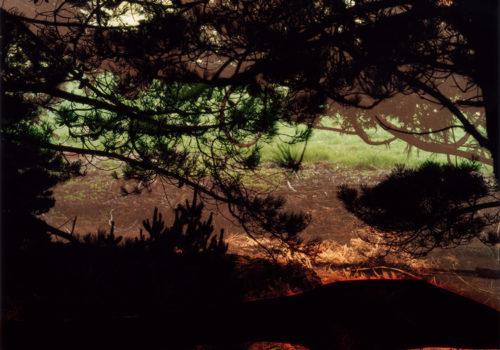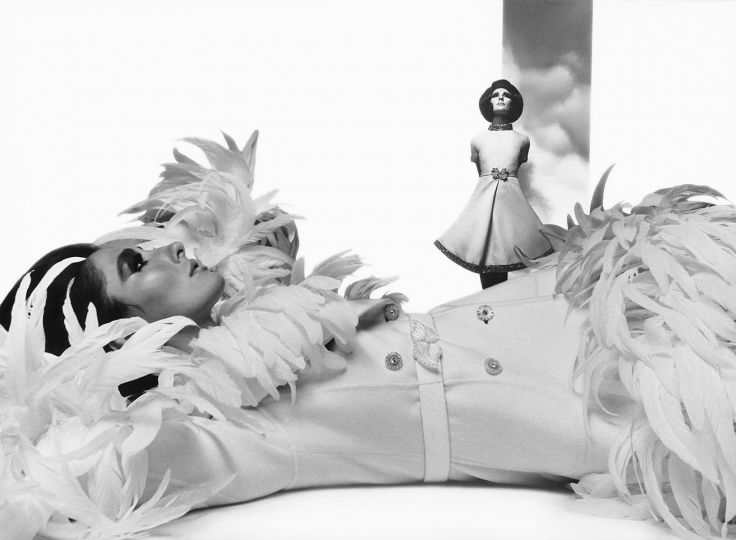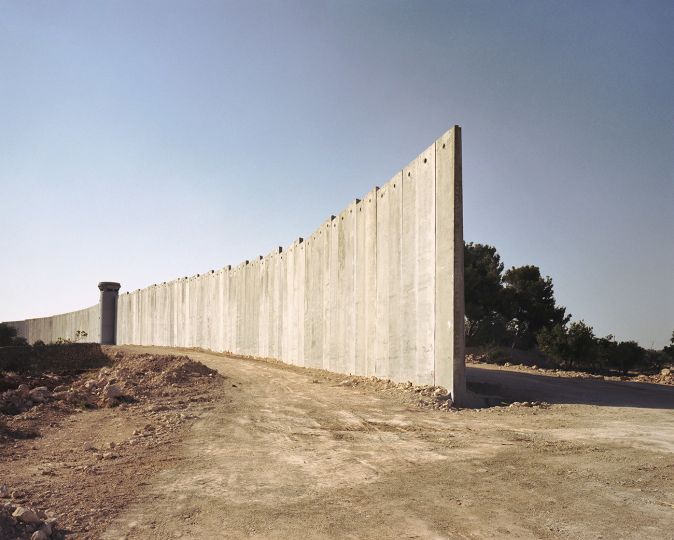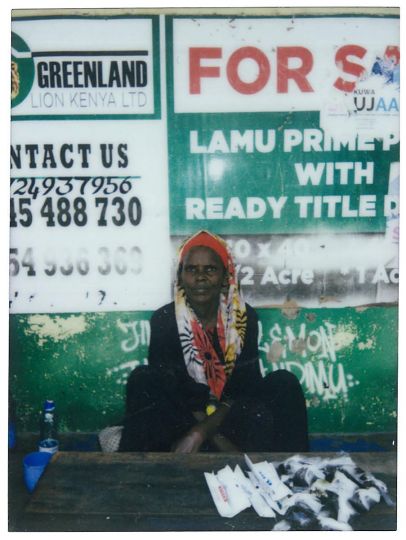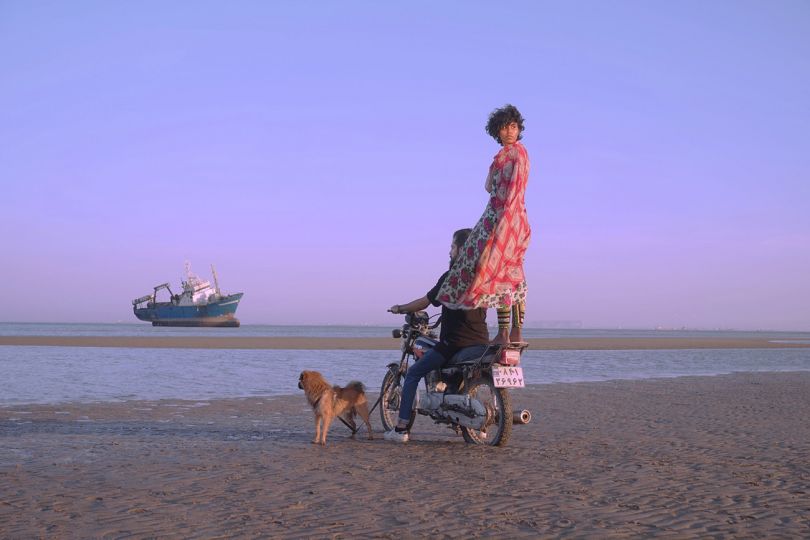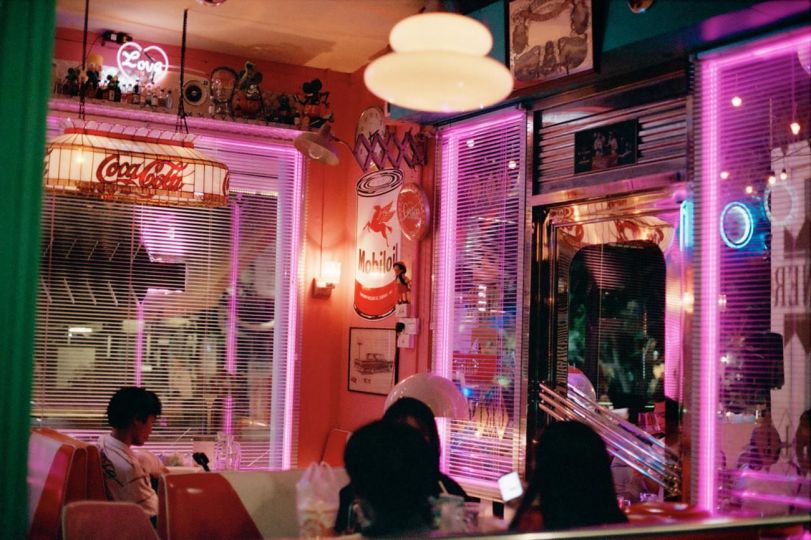Between Real and Unreal
Dafna Talmor is a London-based artist and lecturer whose practice encompasses photography, spatial interventions, curating and collaborations.
Much of her work consists of landscapes staged from collages and montages of color negatives taken in various locations, merged and transformed to give them even more depth. The resulting photographs are an amalgam, “real” but also virtual and imaginary. Her wish: to transform a specific place – initially loaded with memories and personal connotations – into a space of greater universality. A true dialogue between what she sees and the history of photography, her images refer here and there to the early pictorialist processes of combined printing, while engaging in a very advanced contemporary discourse thus metaphorically blurring place, memory and time.
Her photographs are included in public collections such as the Victoria and Albert Museum, Deutsche Bank, Hiscox and international private collections. Talmor’s work is included in Post- Photography: The Artist with a Camera by Robert Shore (Laurence King Publishing 2014) and Alternative Photographic Processes:Crafting Handmade Images by Brady Wilks (Focal Press 2015) and has been featured in publications such as 1000 Words, Elephant Magazine, Camera Austria, ArtReview, IMA, BJP, Hotshoe, GUP, Photomonitor, Artra and BLOW. His first book, Constructed Landscapes, was published by Fw:Books and was released in October 2020.
Alongside her photography work, Dafna Talmor also runs the Goldsmiths School of Fine Art, University of London each summer, freelances as a guest lecturer nationally and internationally, and runs workshops in a variety of contexts including Unseen Amsterdam, Tate Modern, The Photographers’ Gallery, Photofusion, schools and universities.
Instagram:
Website: www.dafnatalmor.co.uk
Gallery: www.tobegallery.hu
Your first photographic trigger?
Dafna Talmor : Rather than choosing a single image, I remember one of my first art teachers introducing us to the idea of staged photography, and how it made a significant impact on the way I thought about photography, and the construction of images, something I continue to think about, and that is at the core of my practice.
The man or woman of image who inspires you?
Dafna Talmor : Too many and they change constantly….
The image you would have liked to make?
Dafna Talmor : Being inspired by other people’s work keeps me wanting to make my own
The one that moved you the most?
Dafna Talmor : Images from Strange Fruit, a recent series by Jon Henry
And the one that made you angry?
Dafna Talmor : A video still of the George Floyd murder
A key image in your personal pantheon?
Dafna Talmor : One of the first images I made in the Constructed Landscapes series: Untitled (0811-1), 2012 It marked an important shift in my practice.
A photographic memory from your childhood?
Dafna Talmor : A picture with my grandmother of me and my sister in front of our childhood home, dressed up as our favourite Muppet Show characters (my sister as Miss Piggy, me as Rowlf the Dog, the resident pianist). My grandmother, who was a seamstress, had sewn the costumes for us.
With no budget limit, what would be the work of art you would dream of acquiring?
Dafna Talmor : So many! The first that comes to mind would be a piece by Lee Krasner (of her re-purposed collaged work). There was a brilliant exhibition of her work at the Barbican Gallery in London a few years ago – I would have happily walked away with various pieces. In terms of photography, The Great Wave, one of Gustave Le Gray’s combination prints.
According to you, what is the necessary quality to be a good photographer?
Dafna Talmor : There are many qualities, it all depends what kind of photographer. There isn’t one formula. Each artist has their own particular way of responding to the world through their work and ideas, which is what keeps things interesting.
The secret of the perfect image, if it exists?
Dafna Talmor : There isn’t one secret, it’s a combination of factors that come together.
The person you would like to photograph?
Dafna Talmor : I don’t like photographing people. It makes me really uncomfortable.
An indispensable photo book?
Dafna Talmor : This changes regularly but one of the first photo books I ever bought when I was a student was Nan Goldin’s I’ll be Your Mirror.
The camera of your childhood, your beginnings?
Dafna Talmor : A Pentax ME Super that my dad gave to me. I loved it, and still have it.
The one you use today?
Dafna Talmor : Mamiya PRO 645. I’ve had the same one since 1998. I bought it just before I started my Fine Art studies at Goldsmiths College and still remember the excitement of holding it in my hands for the first time.
The best way to disconnect for you?
Dafna Talmor : Swimming or a nice bath – basically being submerged in water and away from my devices!
What is your relationship with the image?
Dafna Talmor : Slippery and complex.
Your greatest quality?
Dafna Talmor : Empathy.
An image to illustrate a new banknote?
Dafna Talmor : A cliff or rock face with some element of water, ideally collaged.
The job you would not have liked to do?
Dafna Talmor : I’ve been very lucky. All the jobs I’ve had have been a good experience in one way or another, mostly to do with the people that I’ve worked with.
Your greatest professional extravagance?
Dafna Talmor : My Heidelberg flatbed scanner.
What do you think are the bridges between photography and design?
Dafna Talmor : I think they complement each other.
The city, the country or the culture you dream of discovering?
Dafna Talmor : Iceland and Japan.
The place you never get tired of?
Dafna Talmor : My colour darkroom.
Your biggest regret?
Dafna Talmor : I don’t believe in regrets.
In terms of social networks, are you more into Instagram, Facebook, Tik Tok or Snapchat and why?
Dafna Talmor : I have a very ambivalent relationship to social media and only use Twitter and Instagram so if I had to choose, it would be Instagram, as it is the most image-focused (or used to be!).
Color or B&W?
Dafna Talmor : Color, as it’s what I use primarily in my work, but I love B&W too, it all depends on the work and what makes sense conceptually.
Daylight or artificial light?
Dafna Talmor : Daylight.
Which city do you think is the most photogenic?
Dafna Talmor : I don’t really photograph cities… If I do, I tend to cut out any recognisable architectural features.
If God existed would you ask him to pose for you, or would you opt for a selfie with him?
Dafna Talmor : Neither.
If I could organize your ideal dinner party, who would be around the table?
Dafna Talmor : I really struggled with this question. The list got out of control! Maybe a dance party would be more appropriate.
The image that represents for you the current state of the world?
Dafna Talmor : The first image that comes to mind is The Destroyed Room, 1978 by Jeff Wall .
What is missing in today’s world?
Dafna Talmor : Equality. There needs to be significant change to achieve a fair and equal society on a global level.
If you had to start all over again?
Dafna Talmor : I wouldn’t. As I said, I don’t believe in regrets. Of course, if I could live more lives there’s so much more to learn and experience, and spend time with other people. There is never enough time to do it all.

